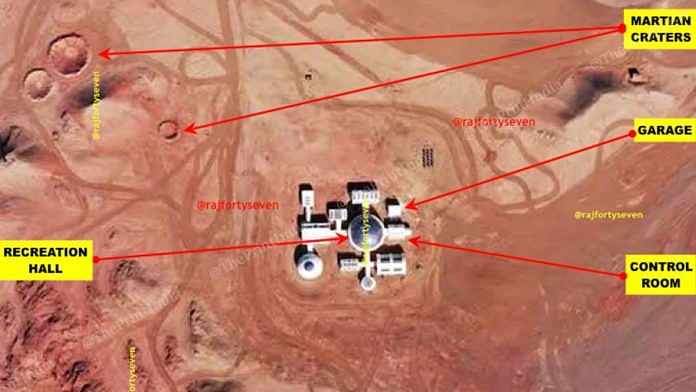New Delhi: Just over a month after China inaugurated its ‘Mars Base No. 1’ – a simulation project that seeks to give civilians an idea of what the Red Planet might be like – ThePrint has accessed exclusive satellite images of the 67-square-km campus.
The much-hyped project is built in the Gobi desert, where conditions are believed to be similar to those on Mars. Located in the central province of Gansu, Mars Base No. 1 opened with a visit by school students on 17 April 2019, just over a year before China plans to send its maiden probe to the Red Planet.
The base was developed for research purposes by the private company C-Space, with the full assistance of the China Taikonaut Research and Training Centre. It was built at a cost of 2.5 billion yuan (approx. Rs 2,507 crore).
It seeks to simulate Mars’ dry climate and topography, marked by hills and deserts.
Li Tanqiu of China’s Taikonauts Centre said in a statement that “Mars Base 1 is the most authentic Martian survival simulation facility in the country by far”. A taikonaut is a Chinese astronaut.
ThePrint takes a look at the base, which may reportedly also serve as a taikonaut training facility one day, through satellite imagery to discover many details that were so far not known about the base.
Also read: ISRO’s women scientists who busted ‘Mars is for men’ and other such myths with MOM
Overview
The location of Mars Base No. 1 is 15 km south of Jinchang and 300 km north of provincial capital Lanzhou.
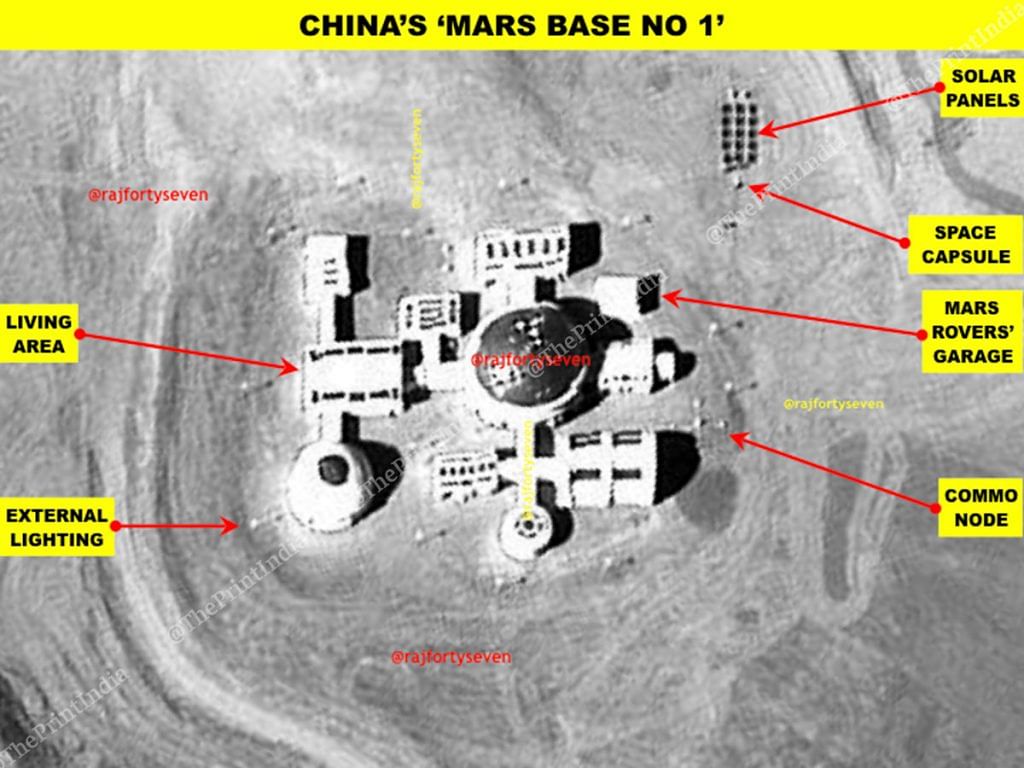
The base consists of nine separate compartments connected to the tenth with covered corridors. The compartments are all airtight, and ground pictures provide impressions of a modern facility.
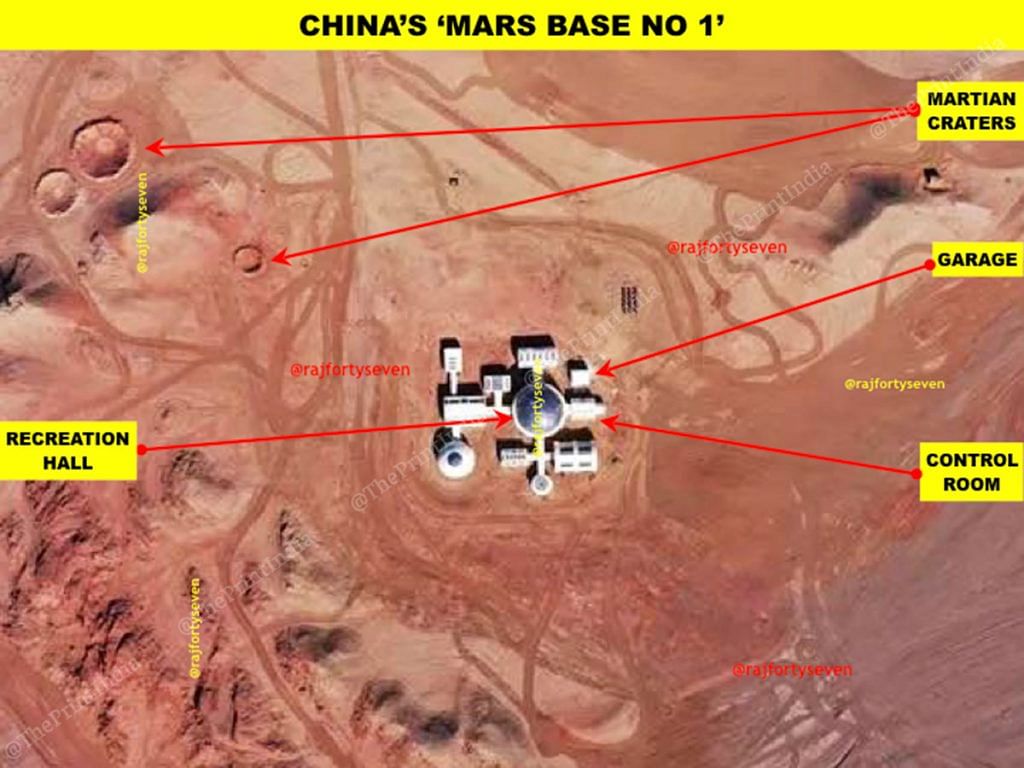
Mars Base No. 1 has a number of Martian craters and caves, with many mock space capsules strewn around to replicate the surroundings an astronaut may encounter on the Red Planet on which no human has yet set foot.
A separate garage has a large Mars Rover parked, with many smaller ones around it.
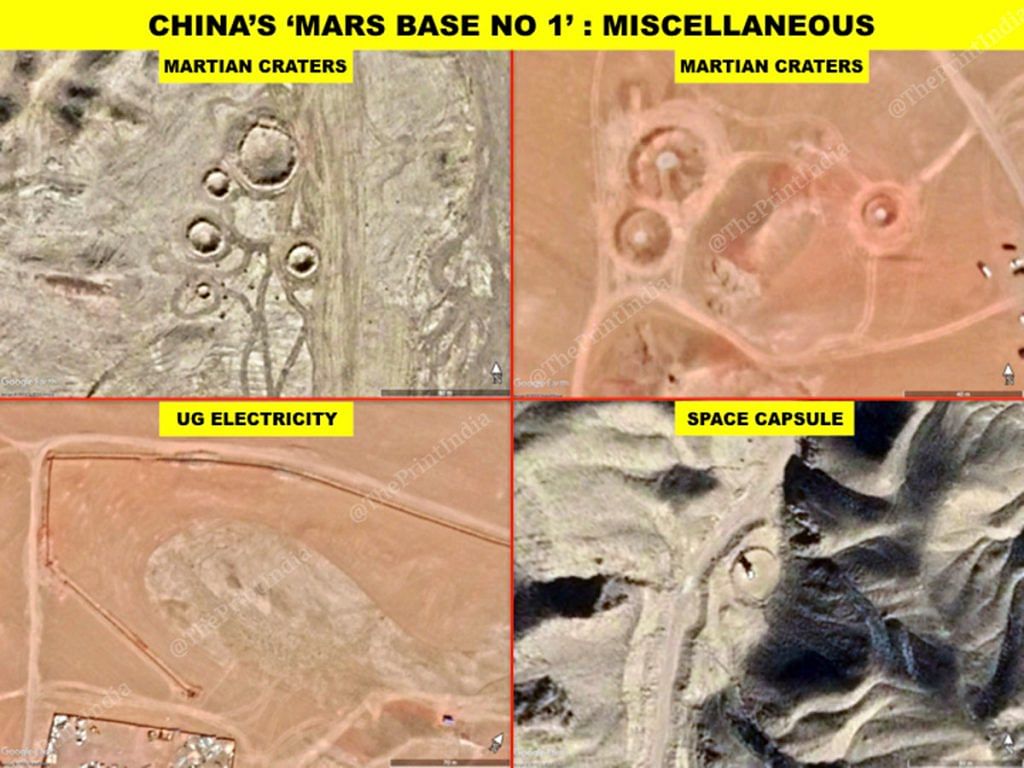
Electricity and possible water connectivity have been provided with underground cables and pipes. A solar-powered electricity generator is observed at the base.
Debris created
Although the latest images of Mars Base No. 1 show very clean surroundings, Google Earth photographs from construction days indicate the presence of enormous amounts of packaging material used to carry the prefabricated compartments.
The same amount of debris could be created on Mars if this project experiment is replicated on the planet.
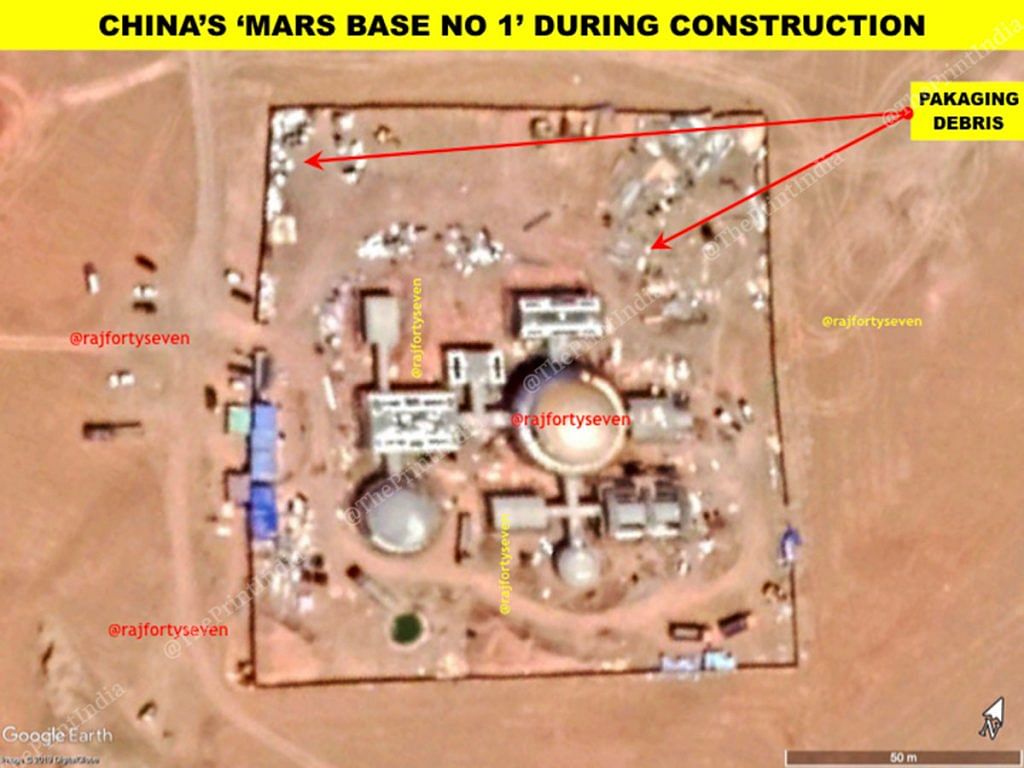
10-month project
Work on Mars Base No. 1 started somewhere in the beginning of June 2018. The inauguration in April 2019 indicates that it took about 10 months to complete the facility.
The large number of vehicles and temporary accommodation observed during construction indicate that at least 100 people would be required to build such a facility in a year’s time.
The size of each compartment on the satellite imagery varies from 10m to 25m, suggesting that at least 20-25 missions will be needed to carry such massive loads to Mars.
Oxygen generation
Satellite imagery does not indicate how this Martian base generates its oxygen. It is estimated that more than 5 kg of oxygen is needed to sustain six persons every day. The cost of transporting oxygen from Earth to Mars for such a large facility is expected to be prohibitive.
C-Space claims this base is merely for experimental and research purposes and will expand it soon. However, space scientists believe the project may not be sustainable in the long run and the company may eventually turn it into a tourist site with hotels around it.
Also read: First ever quake detected on Mars by NASA’s InSight lander


